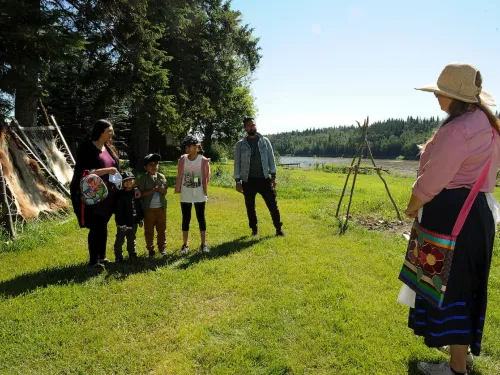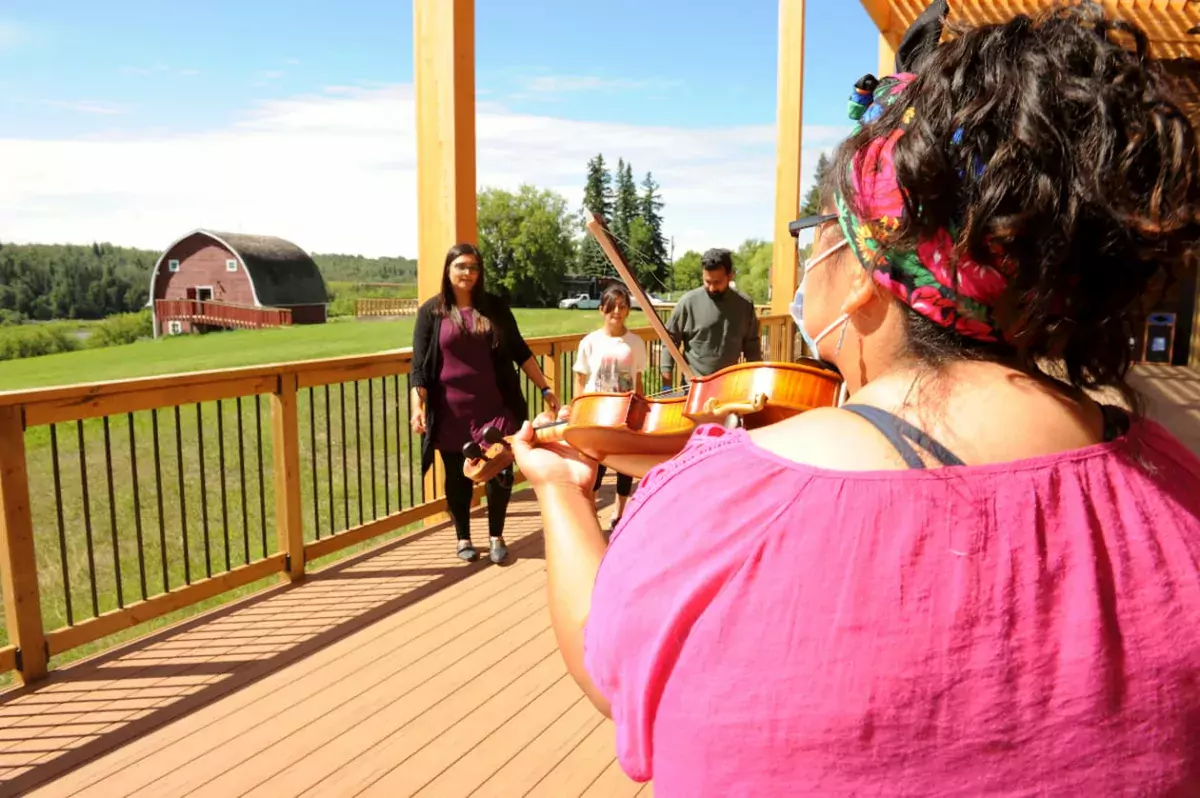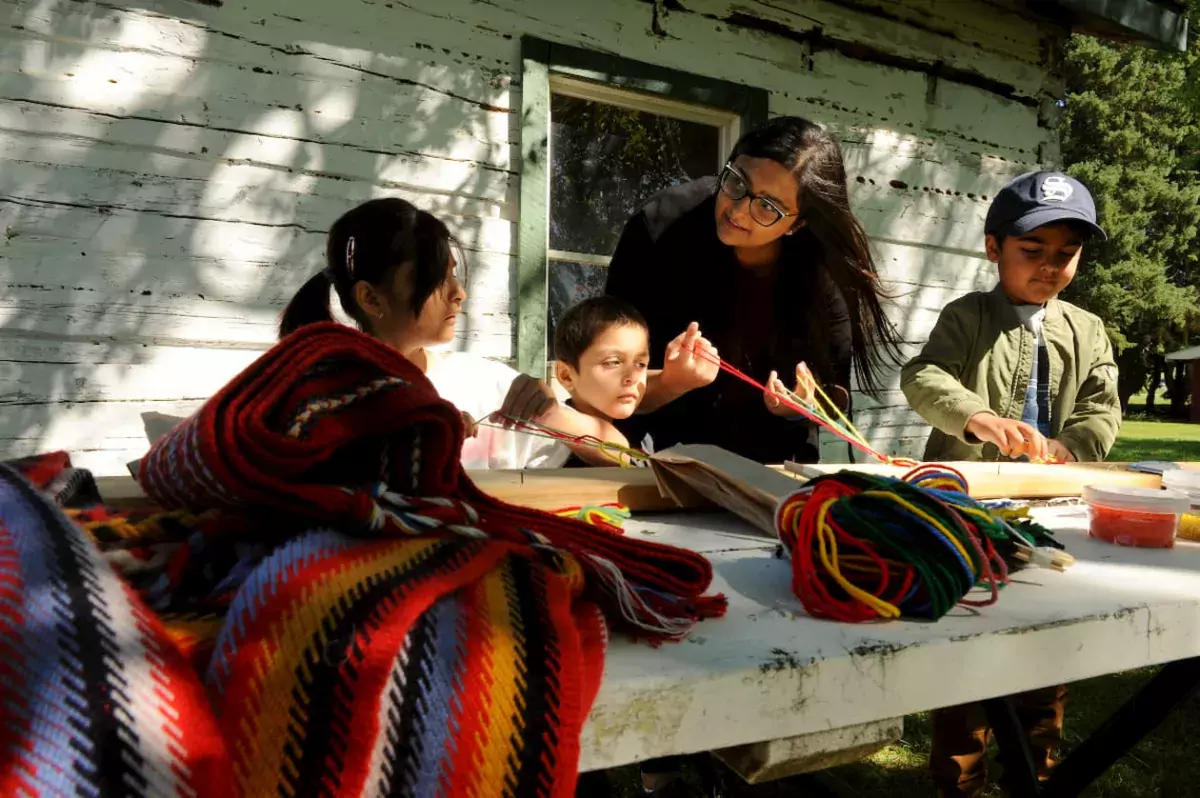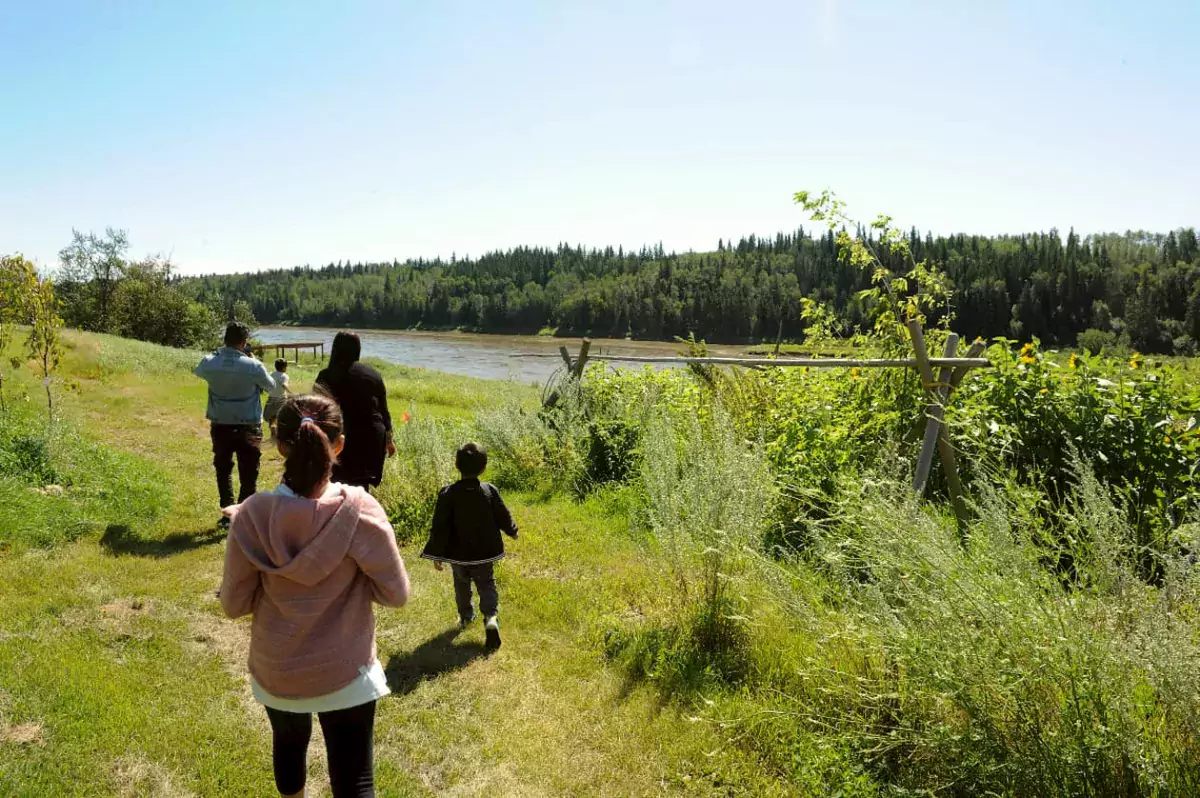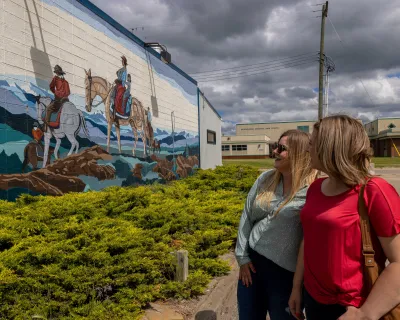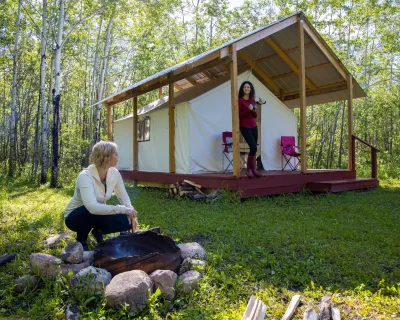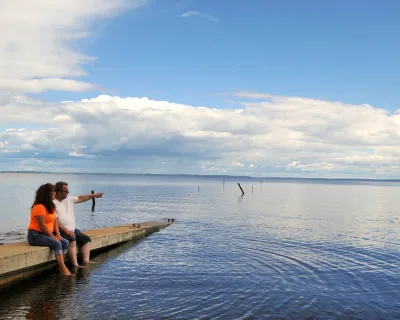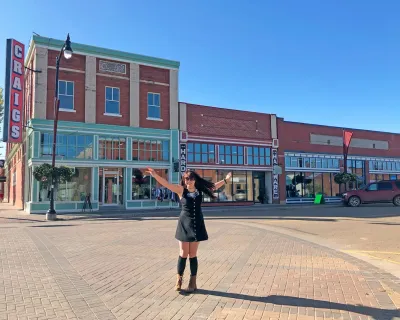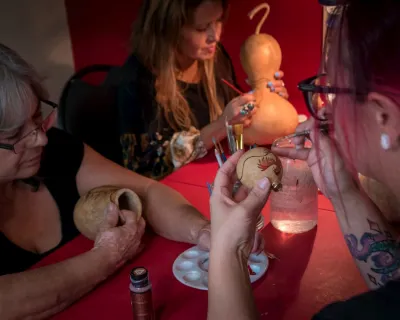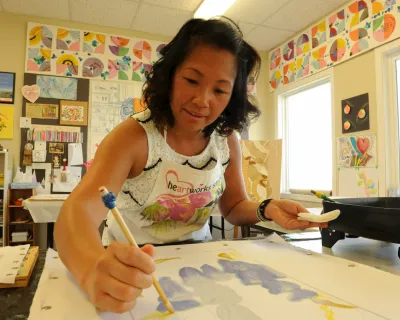Explore Métis heritage by the river
#TakeItToTheLake
Métis Crossing invites visitors to discover Métis culture with storytelling, games and crafts
Fiddle song dances play lightly over the patio at Métis Crossing as Sameer Ahmed and his wife Salma do their best to match their steps to the beat. Soha, their daughter, joins in too. Brianna Lizotte, the fiddle player, is teaching them a Métis jig, with the basic 3-and-1 step and a couple of changes.
The pace picks up and the three of them keep up, but they’re moving quickly and by the end they are all smiling and huffing to catch their breath. I’ve heard from other Métis dancers that you can’t jig without smiling. It seems to hold true, although the first expression people often adopt is one of intense concentration, giving way to smiles.
Special performances like these are often part of the experience of touring the site at Métis Crossing, and this is definitely a highlight for the three.
#MetisCrossing; Meet at the River to be Transformed
The Ahmed’s younger two boys, Saifaan and Rehan, were more excited by a fishing game in which they used magnetized rods to catch "fish" in a barrel (“10 more minutes!”) and sash braiding. But all have found something to engage in, which is good for a family of five with children ranging in age from four to 12. With a mix of history, storytelling, crafting and games, the experience of a visit here engages all ages.
A self-guided tour of the site begins with an easy stroll through the grounds to a hunting camp set by the river. There, visitors can learn about how early Métis society provided the necessities while living and working as a collective.
“We are traditionally a collective society,” explains an interpreter. “If you need something, you ask somebody. If they have it, they will share it with you. So if you need some food, you just ask. Stealing was not tolerated.”
Men who joined the hunt had to be able to ride a horse while loading and shooting a rifle. Women had roles in the camp as providers and cooks.
Down from the buffalo hunting camp, there is a fishing camp, and farther along, a homestead. At each site, visitors can learn a little more about the lifestyle and culture of the time, and in some cases try their hands at various skill-building activities.
While the Ahmed family has visited other heritage attractions in Alberta, both Salma and Sameer come away having learned something new.
“We’ve been to other places, and you get a certain impression about indigenous ways of living,” Salma says. “I found it interesting to see how similar the Métis and settler cultures were. You are probably thinking tipis versus seeing actual homesteads.”
Another big takeaway for the family is the significance of the Victoria Settlement, on which Métis Crossing sits. Perched on the banks of the North Saskatchewan River about 100 kilometres downriver from Edmonton, the settlement was strategically situated for fur trading expeditions.
“I would never have known about this place, that it was such a major fort between Edmonton and Winnipeg,” Salma adds. “When you think about them going down the river, they had to have places to stop, and where they stopped is where people lived.”
In today’s developed world, it’s easy to overlook the significance of the river in shaping culture and civilization in the pre-modern era. Before railways, highways and modern conveniences, rivers were life-giving corridors of activity. The Métis people lived off this land and venerated its bounty.
Looking out on the settlement, with its flourishing gardens and log-built homesteads backing onto the flowing waters of the North Saskatchewan, one can begin to get a sense of that connection and what it meant to the Métis people, and what lessons we might take from that.
WHEN YOU GO
#MetisCrossing; Meet at the River to be Transformed
For more on how to #TakeItToTheLake this summer, either search the tag on Facebook, Twitter or Instagram or read more here.
Share what you find when you #TakeItToTheLake this summer, using the hashtag and you might be featured on ZenSeekers and/or our partners' social media channels.
Like Our Facebook Page
